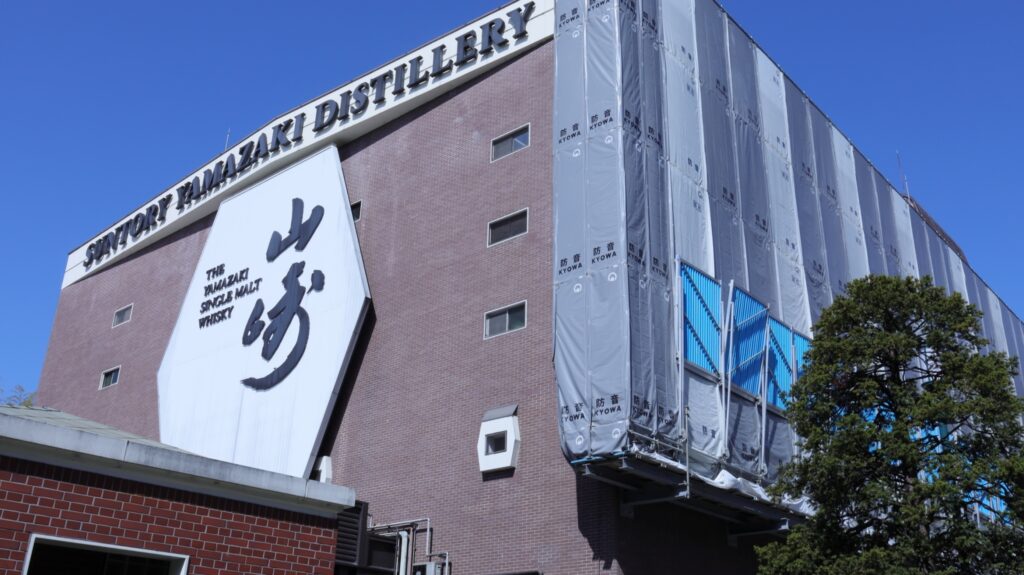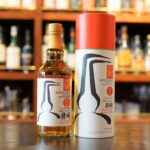The year 2023 marks the 100th anniversary of Japanese whisky.
Exactly 100 years ago, Shinjiro Torii and Masataka Taketsuru of Kotobukiya (now Suntory) built the Yamazaki Distillery on the border of Kyoto and Osaka.
It is no exaggeration to say that whisky production has continued here for 100 years and has laid the foundation for Japanese whisky as we know it today.
On March 20, 2023, the day after our visit to the “Sakurao Distillery” on March 19, 2023, we visited the “Yamazaki Distillery” before it underwent renovation work.
The history of Yamazaki distillery is also the history of Japanese whisky, and I thought it was very important to know about Yamazaki distillery in order to “know” the 100th anniversary of Japanese whisky.
Online Reservation for Yamazaki Distillery Tour
Online reservations are required to visit the Yamazaki Distillery, but the facility is currently undergoing renovations and online reservations are not available.
In the past few years, the number of people visiting the distillery to purchase ” Single Malt Yamazaki ” has increased rapidly, and online reservations have been very difficult to make. Some of them seemed to visit not to tour the distillery but to purchase the product, and as a countermeasure, the Yamazaki distillery stopped selling “Single Malt Yamazaki” at the distillery around this spring. Since then, online reservations have become relatively easier.
Even so, the distillery was almost sold out by the evening of the day reservations began, so we recommend making reservations in the morning of the day reservations begin when they resume this fall.
Although the Yamazaki distillery is currently closed for tours, the Suntory Yamazaki Distillery website has a wealth of contents such as the ” Distillery 360° Free Tour ” and ” Paid Online Live” that utilize VR, so you can fully experience the distillery without having to visit the site. You don’t have to go to the distillery to experience it.

2. the way from Osaka to Yamazaki distillery
After visiting the Sakurao distillery the day before, we moved to Osaka to prepare for the next day’s visit to the Yamazaki distillery. We had booked a paid tour at 10:20 on that day, so we left Osaka station at 9:10 in the morning.
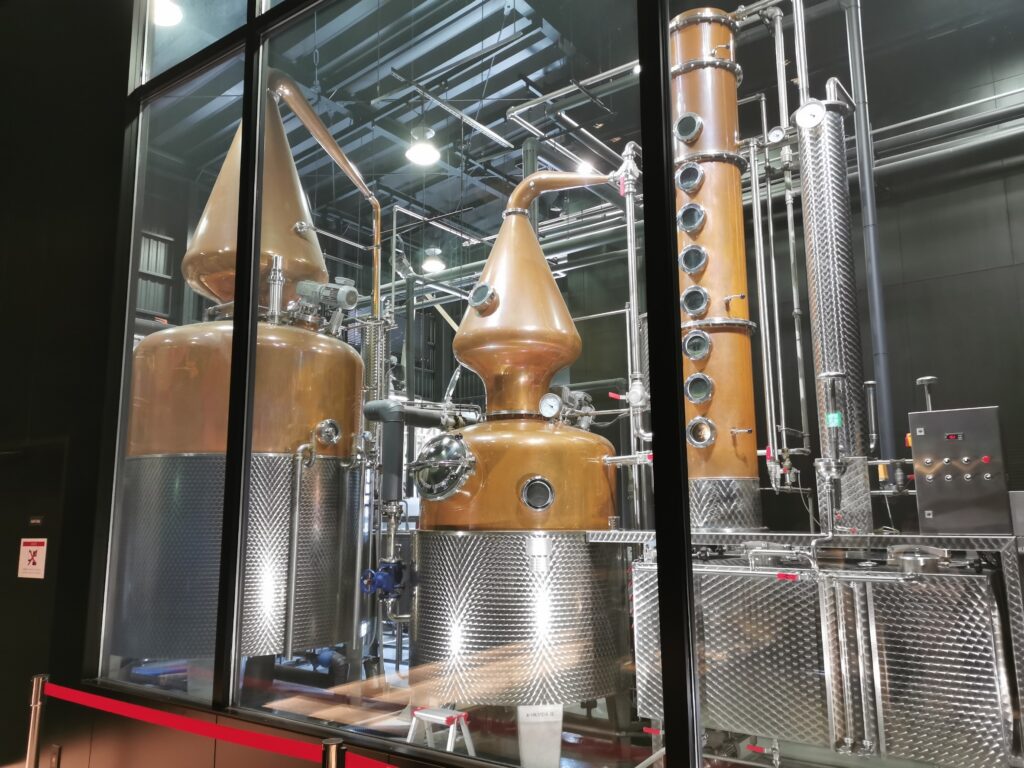
①About 27 minutes from JR Osaka Station by JR Kyoto Line rapid train.
↓↓.
2) Arrive at JR Yamazaki station. About 10 minutes walk to Yamazaki distillery.
When you arrive at Yamazaki station and get out of the ticket gate, you will not see any building that looks like Yamazaki distillery. But as you walk along the route, you will start to see it.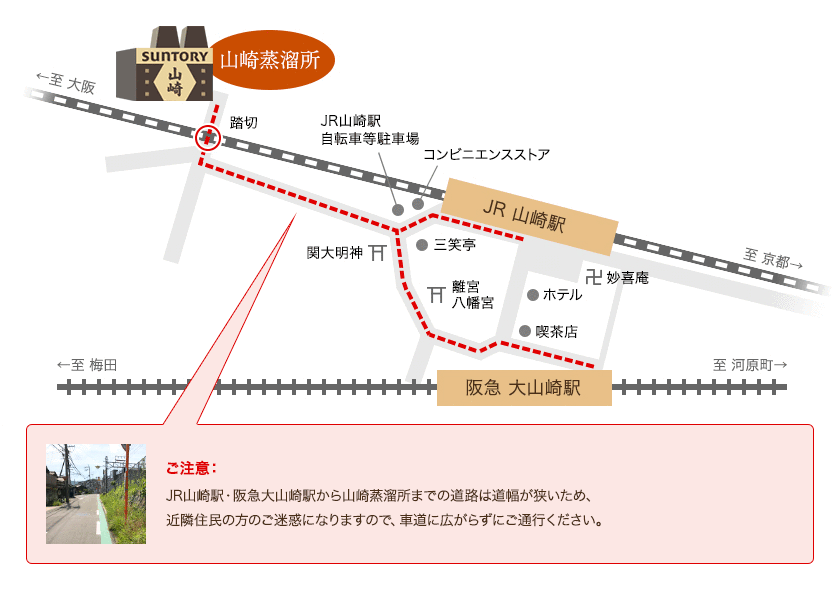
| Name |
Suntory Holdings Limited |
| Location |
As you continue walking, you will see the building of Yamazaki distillery on the way. You will start to get quite excited from this area. After crossing the railroad crossing, you will see a distilling machine that seems to have been used in the past.
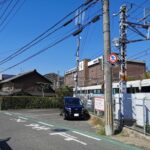 |
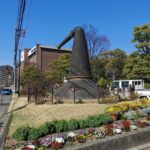 |
Beyond that, you will finally see the entrance to the Yamazaki distillery.
 |
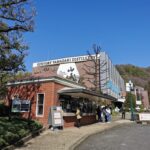 |
As soon as you arrive, you will be approached by an attendant who will confirm the nature of your tour and the number of people in your group, and you will be instructed to wait in line at a designated position until it is time to begin your tour.
After completing the registration, you will be asked to assemble on the second floor of the whisky Pavilion by the time the paid tour starts. Until then, enjoy the Yamazaki whisky Museum. 3.

Yamazaki Whisky Museum
The Yamazaki Whisky Museum is not enough time to enjoy the whisky while waiting for the paid tour.
The visitor center is full of attractions of the Yamazaki Distillery, including Suntory’s history, past materials, product exhibits, a distillery store (store), a paid tasting counter, and sample bottle displays.
3-1. Suntory Historical Materials Exhibition Booth
At the Suntory historical exhibition booth on the 1st floor, visitors can enjoy the history of Suntory whisky from the start of whisky production by the founder Shinjiro Torii at Kotobukiya, the change of company name to Suntory by the second generation Keizo Saji, the birth of single malt Yamazaki, the development of the whisky business, and the subsequent history of Suntory whisky, including the people involved at that time, advertising posters and product bottles. You can enjoy the history of Suntory Whisky by looking at the people involved at that time, advertising posters, and product bottles.
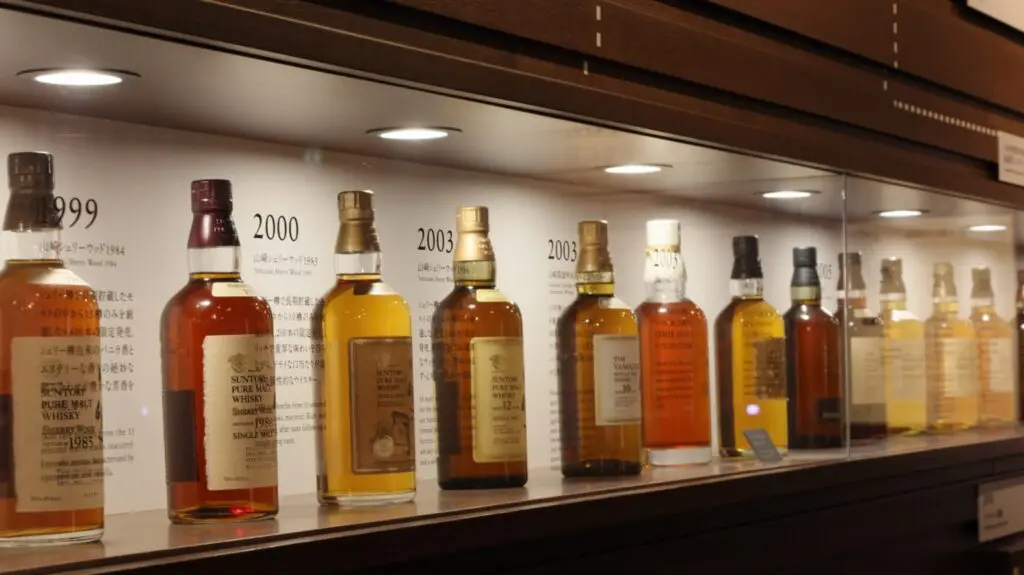
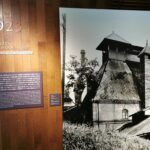 |
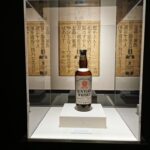 |
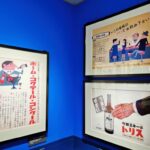 |
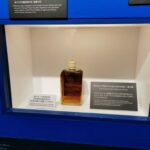 |
 |
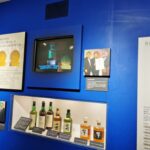 |
3-2. Distillery Shop (store)
At the Distillery Shop on the 2nd floor, a set of Yamazaki Distillery Limited whisky, Morozoff’s Yamazaki Distillery Chocolate, and a tasting glass can be purchased for 3,548 yen (tax included).
The distillery tour is available by reservation only, so you can enjoy the tour comfortably without crowds. (When we went back to the store after the tour was over, it had been restocked.)
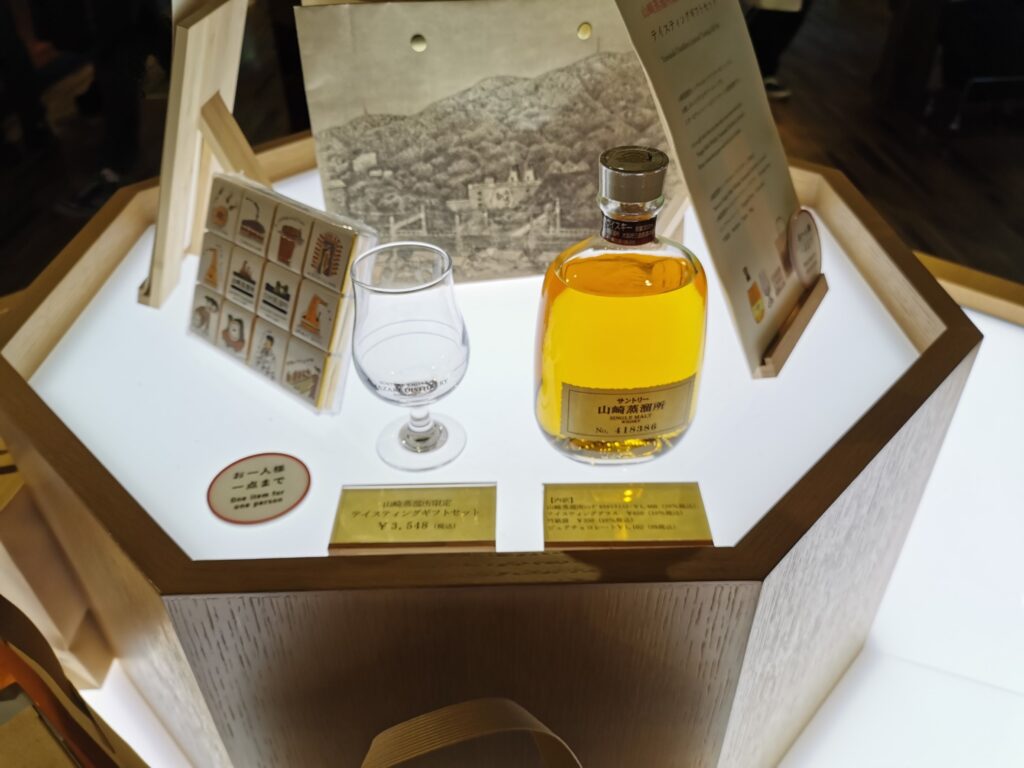
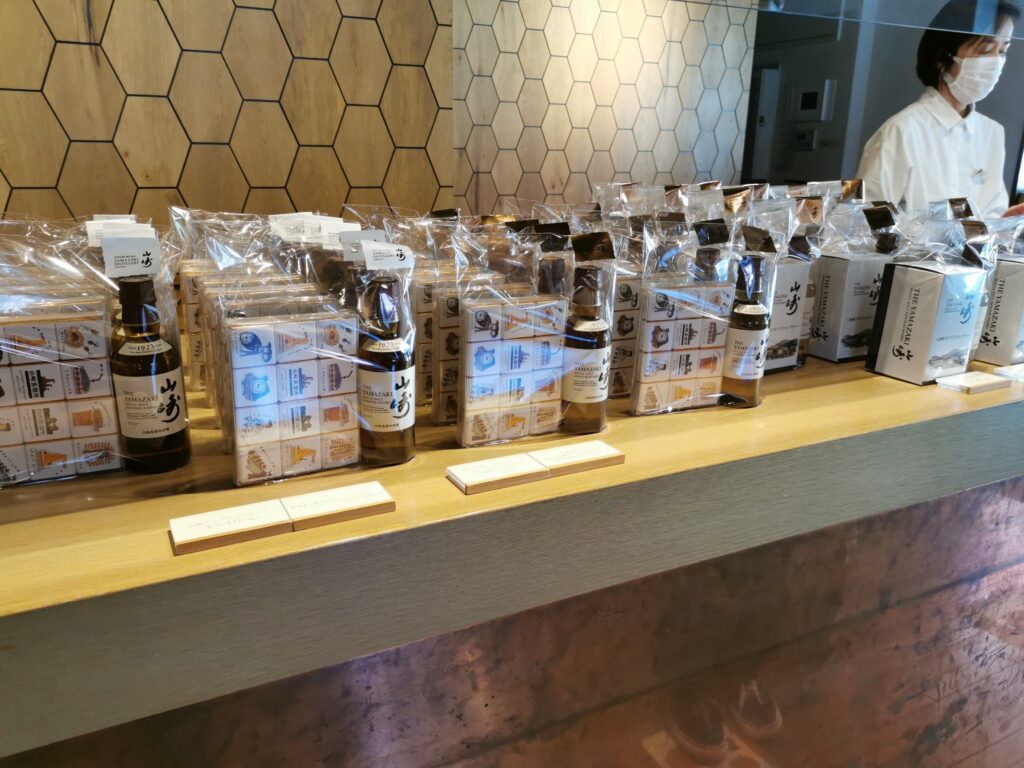
3-3. Stunning sample bottles
The aisle between the exhibition booth and the tasting counter on the first floor is lined with sample bottles from the Yamazaki distillery on both sides of the aisle. The whiskys are aged in a variety of barrels, including bourbon, new and sherry casks, and come in transparent bottles of various colors, making them simply breathtaking.
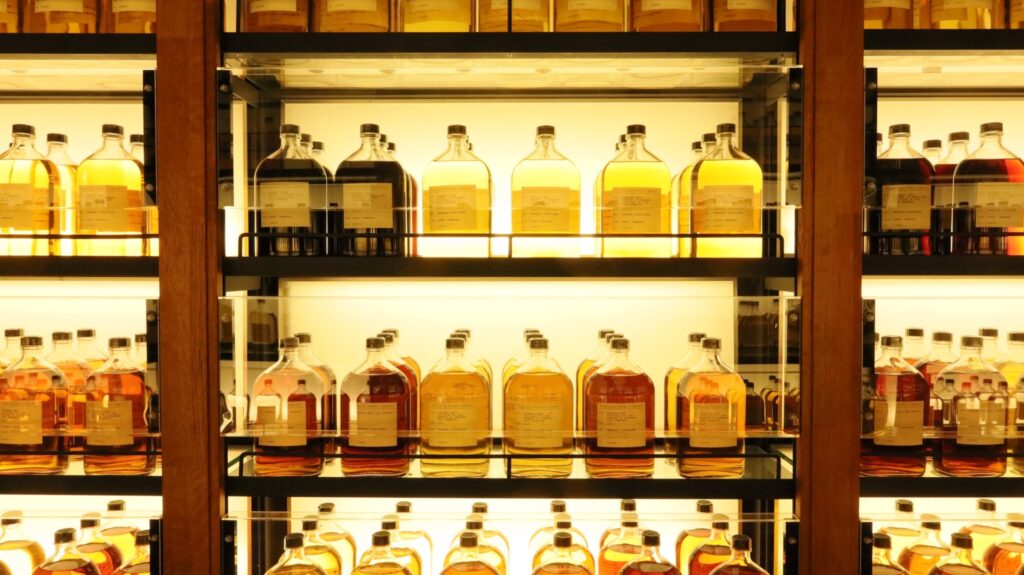
 |
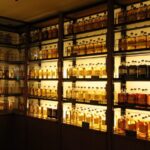 |
3-4. Tasting Counter
At the tasting counter on the first floor, you can sample most of Suntory’s whiskies at very reasonable prices. In addition, you can try Yamazaki Distillery’s new make, limited edition Yamazaki Limited, and Hibiki Blossom Harmony. Many people ordered the Suntory Super Ripe Set ( Yamazaki 18years, Hakushu 18 years, and Hibiki 21 years, 15ml each), as they had come to the distillery by chance. We enjoyed Yamazaki 25years, Hakushu 25 years, and Hibiki 30 years, which are not offered at BAR Shinkai.
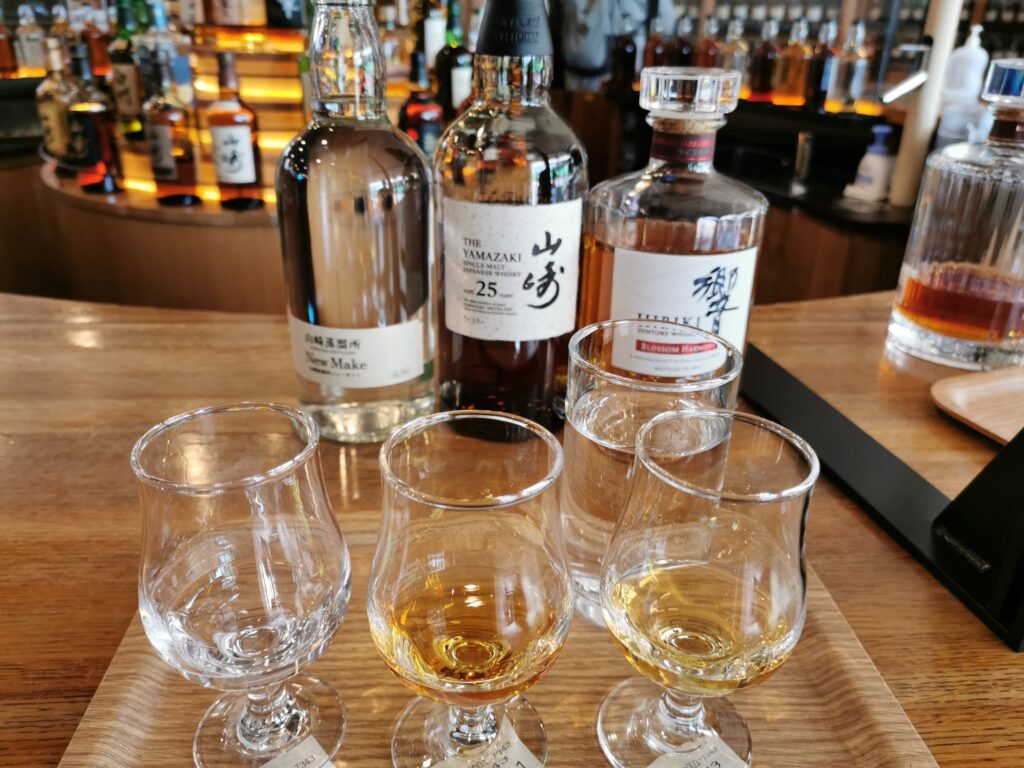
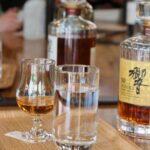 |
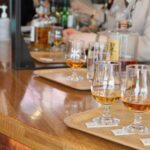 |
4. paid tour (1,000 yen per person)
Before you have time to enjoy the Yamazaki Whisky Museum, it is time for the paid tour, and you will gather on the second floor where models of the whisky manufacturing process are lined up. I wondered how many people would be on the tour, but surprisingly there were only about 20 to 30 people. After the tour guide explained the flow of the tour, we finally started the tour.
The tour proceeded in this order: to the production site, to the mash tun (saccharification layer) and washback (fermentation tank), to the distillation tower to see the 12 distillers, to the aging room, to the courtyard, and to the tasting.
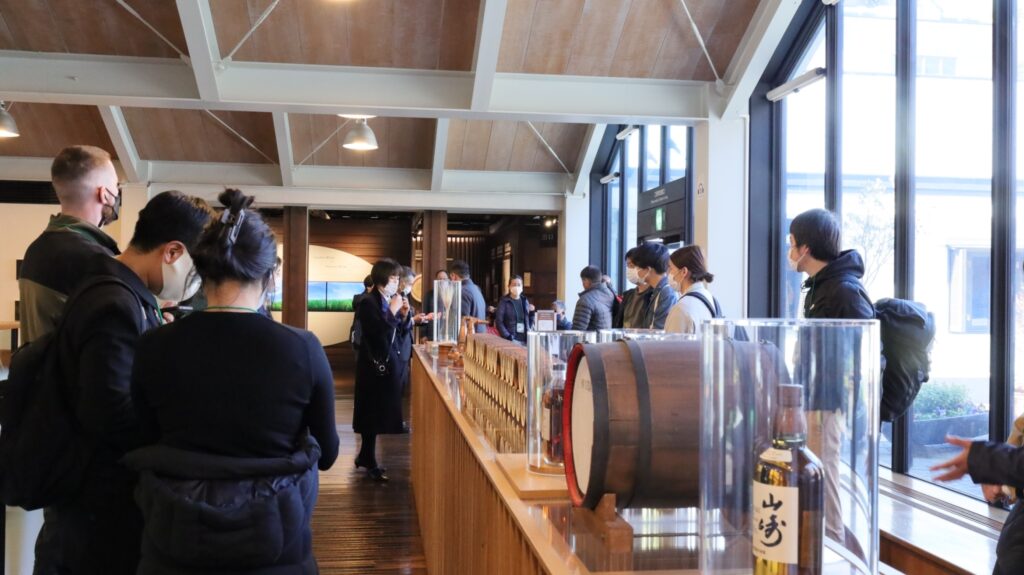
4-1. Preparation (saccharification and fermentation)
The first stage of the tour is the “preparation (saccharification and fermentation)” process.
Upon entering the room, one is immediately struck by the sheer size of the equipment. The mash tun (saccharification layer) was unmatched in size by any craft whisky distillery we have ever seen.
There are eight wooden (Oregon pine) washbacks (fermenters). There are also 12 stainless steel fermenters. Most of the malt used in the distillery is imported from Scotland.

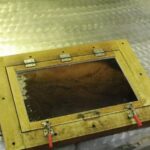 |
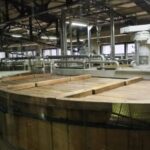 |
4-2. distillation
For administrative reasons, it is not allowed to stop and take pictures inside the distillation column.

The distillers, six first distillation units and six redistillation units, are lined up on both sides of the distillation column, which is also a breathtaking view. I heard that the color of the distillation units becomes dull after long use, but all of Yamazaki’s distillation units were shining gold.
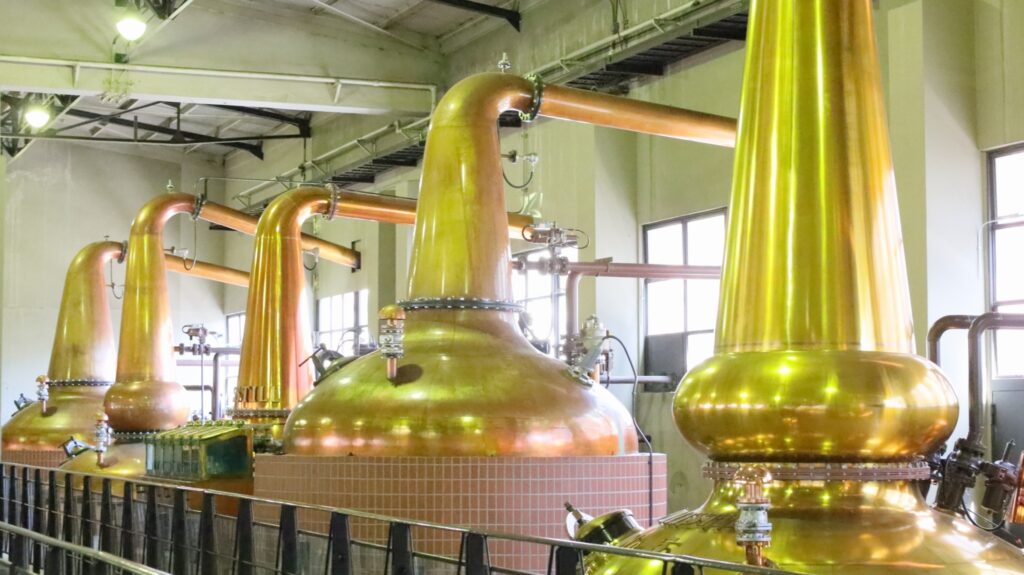
In order to produce a wide variety of flavors, the distillers have different shapes and arm angles. In addition to the 12 distillation units shown on the tour route, four more units were added in 2013, bringing the total number of distillation units to 16.
4-3. Maturing room
Take the stairs up the building next to the distillation tower, which is about 4 stories above the ground. You will be guided to the cellar.
When you enter the cellar, the ceiling is not so high and it is a cool building. There are two or three tiers of barrels stacked in a dunnage style, and they are stored tightly in the back of the building.
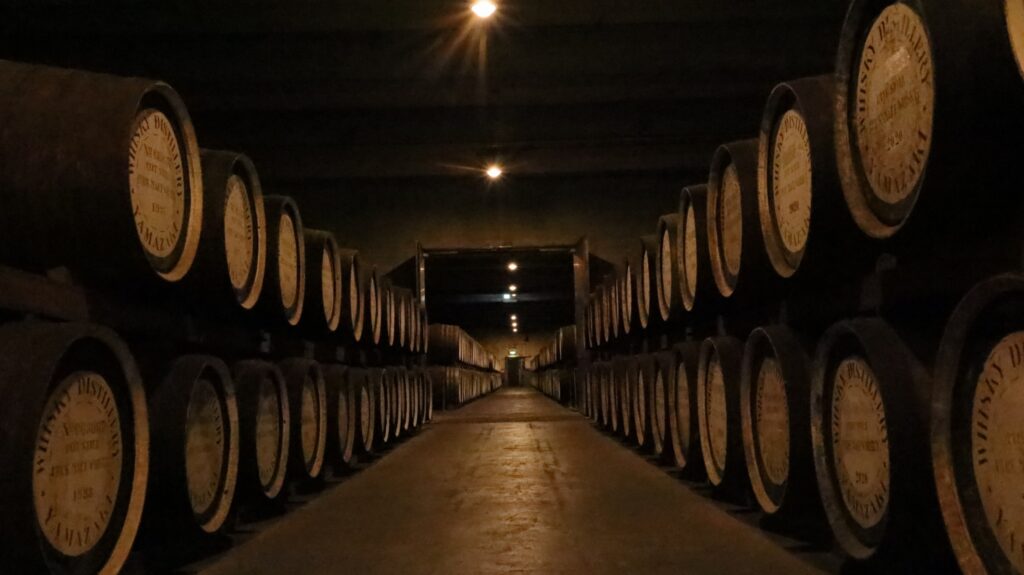
We were informed about the sizes of the barrels used at the Yamazaki distillery. The most commonly used barrels are puncheon barrels. Barrels, hogsheads, oak barrels, Panish oak barrels, and red wine barrels are also lined up.
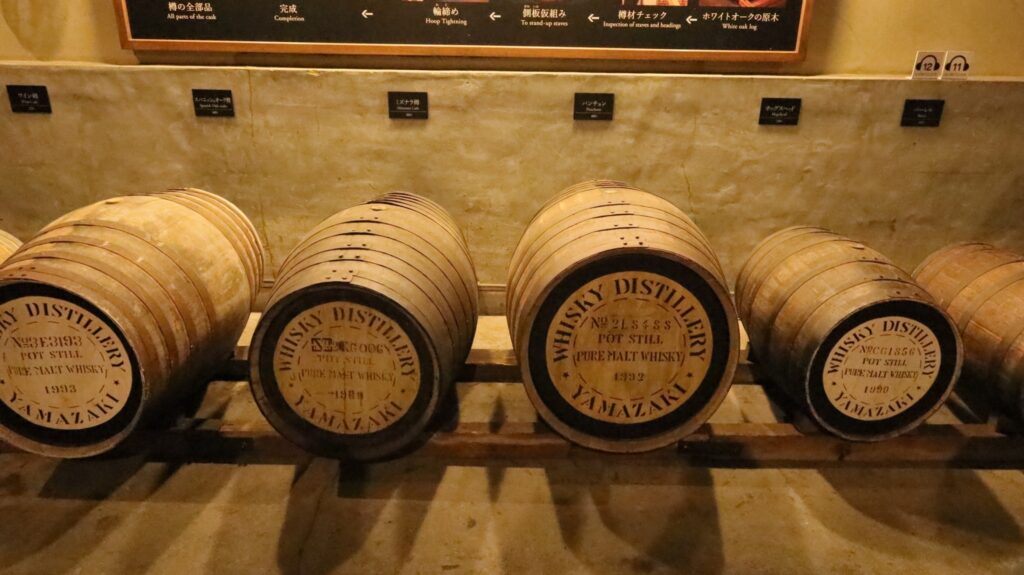
The barrels have a transparent top panel that shows the remaining amount of the original wine inside and the different colors, and we are briefed on the angel’s share and color changes during the aging process.

While moving around in the aging cellar, we can see “the first barrel of our country’s original malt whisky distilled in 1924”. The original spirit in it has already been drained, and now it is being filled with a new new make for the next stage of aging.
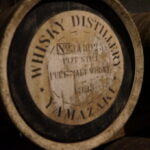 |
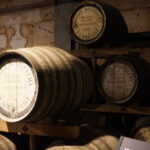 |
The aging casks in storage are marked with the year of aging on the top panel. The distillation years also vary, and you can easily find the year of your birth.
The white mirror plate is malt whisky and the black one is grain whisky brought from the Chita distillery. The Mizunara casks have the character “Wa” written on the end of the cask, and furthermore, the character “Sho” is written next to it to show how many times the cask has been used.
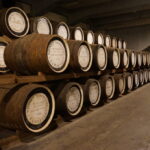 |
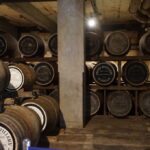 |
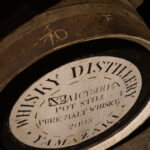 |
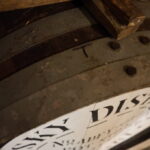 |
4-4. Tasting
After passing through the cellar, we arrived at a charming courtyard. Unfortunately, the cherry blossoms were not in bloom yet, so we could not see the beautiful scenery, but the murmuring water and nature made it a soothing spot.
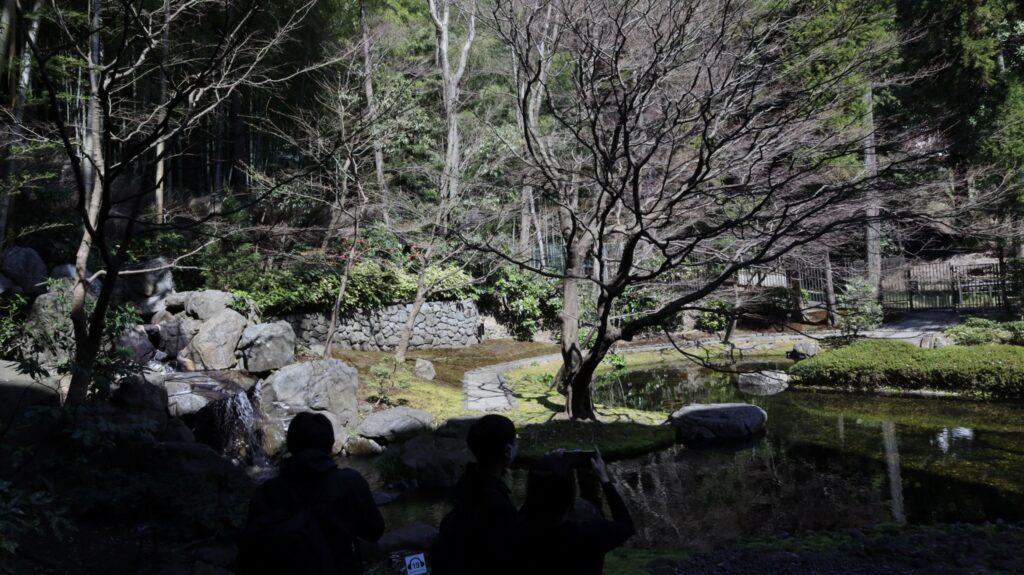
Returning in the direction of the whisky Museum, the tasting was already prepared in the building next to the whisky Museum.
The tasting proceeded under the careful guidance of our guide. We proceeded with the tasting by listening to the tasting method in detail and imitating it.
Three types of tasting are available: (1) white oak cask uncasked, (2) wine cask uncasked, (3) single malt Yamazaki, and (4) single malt Yamazaki, which is prepared for one glass. Please try it the way you like it. In addition, sweets and chocolates will be available to accompany the tasting.
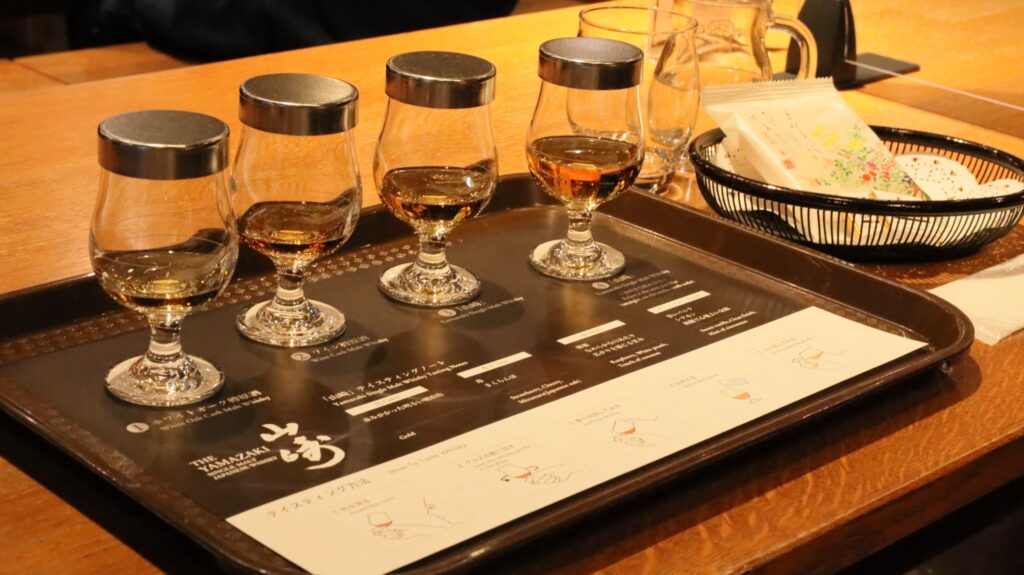
On the screen in front of the tasting room, an image of the aroma of each sake is shown, and you can compare it with the actual aroma of the wine you are tasting.
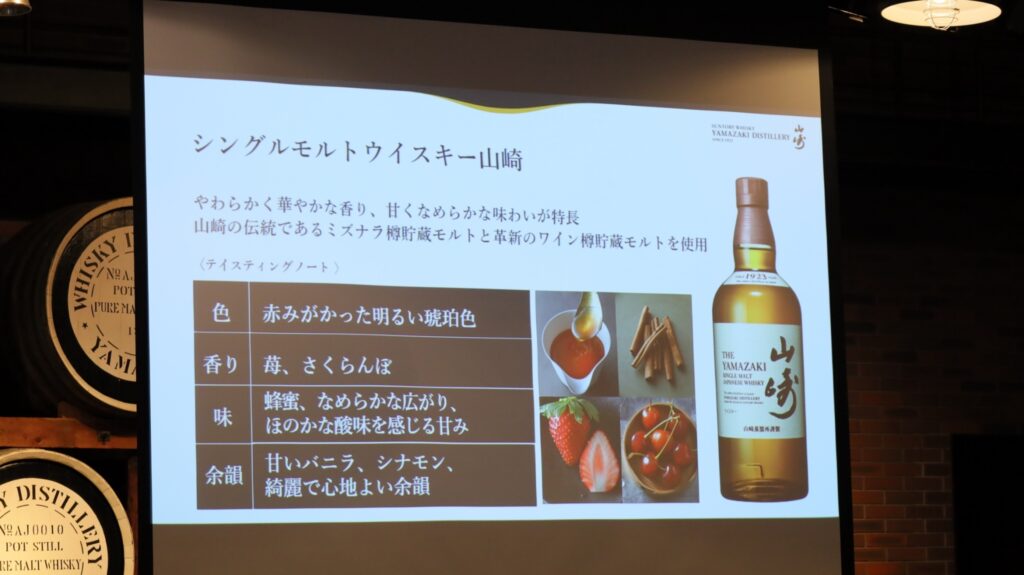
(1) White oak barrel sake is the base of Yamazaki’s flavor, with aromas of savory nuts, toast, and barley.
(2) Wine cask barley malt is the image of strawberries, cherries, and berries.
The key malts of (1) and (2) are blended to make (3) Single Malt Yamazaki.
The guide will tell you to drink (4) the way you like it…, but the flow of making highballs will be led by the guide. Fill the glass tightly with the prepared cracked ice, pour in the whisky, and steer it well. The ice is filled in the empty space, and finally, Suntory Premium Soda is slowly poured in. Stear one last time to complete the process.

 |
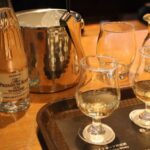 |
The fee for this paid tour was 1,000 yen per person, but we felt that it was worth more than 1,000 yen just to see the production site, and the tasting was worth more than several thousand yen since we were given two types of original sake and two glasses of single malt Yamazaki, which we cannot drink on a regular basis.
At the end of the tasting, we were informed that we could purchase a mini bottle of Yamazaki and a set of chocolates at the distillery store, and that we could also win a raffle for a 700 ml bottle of single malt Yamazaki.
After the tasting, you will be able to apply for the lottery and complete the entire process from the tour to the tasting.
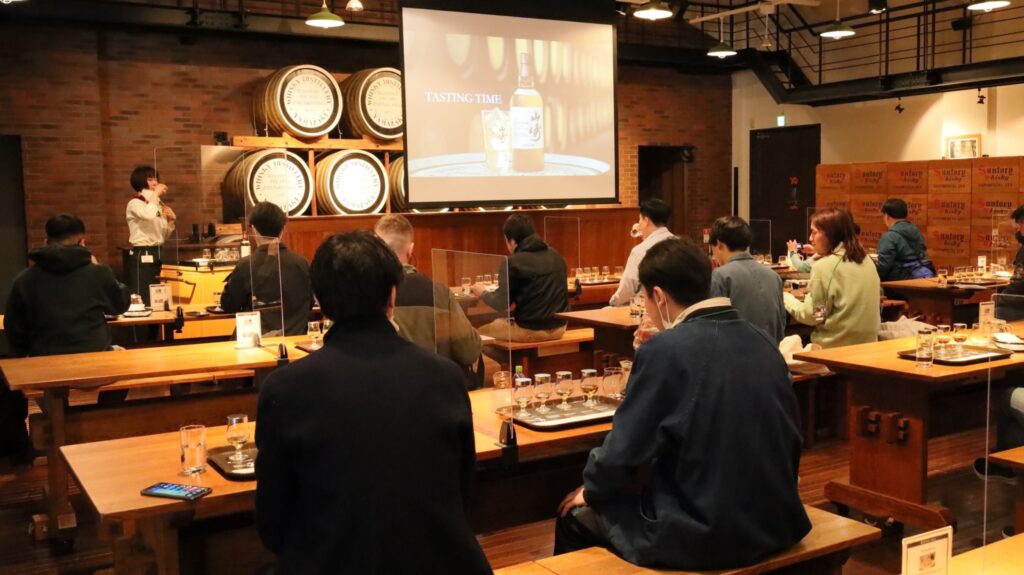
4-5. Tour Summary
After the tour, we went to the Yamazaki Whisky Museum and enjoyed tasting various whiskies at the tasting counter and shopping at the distillery store. However, the time of the bullet train back to Tokyo was approaching, and I was not able to enjoy the tasting in a relaxed manner.
We took our time to enjoy the rare Yamazaki, Hakushu, and Hibiki, which are not usually available.
For those who visit the Yamazaki distillery, I recommend that you make sure you have enough time to spend at the distillery. This time we arrived at the Yamazaki distillery at 9:50, the tour started at 10:20, and the tasting at the paid tasting counter ended at 13:00, so we were there for about 3 hours. To be honest, I felt that even 3 hours was not enough time to enjoy the distillery, so if you want to enjoy it thoroughly, it would be better to reserve about 4 hours for your stay.
5. the greatness of Kotobukiya, Suntory, and Shinjiro Torii
This visit made me feel the greatness of Suntory Yamazaki Distillery, which celebrated its 100th anniversary this year.
I imagine that the passion and determination of Shinjiro Torii, who decided to make whisky and built the Yamazaki distillery when the distillery was still called “Kotobukiya” and whisky was hardly drunk in Japan at that time, were tremendous.
He must have felt the future potential of whisky so much that he poured the money he earned from red port wine into the whisky business, which was not profitable at the time. I think it is not an easy decision to make as a business owner.
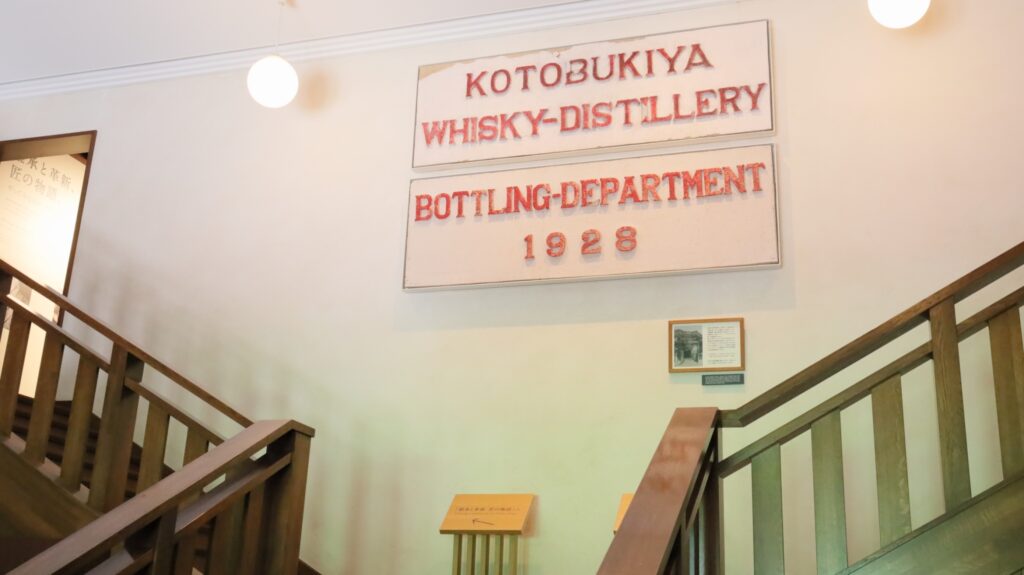
Over the past 100 years, Suntory has introduced a succession of hit products such as ” Suntory Old,” “Single Malt Yamazaki,” “Hibiki,” “Hakushu,” and ” Kakubin ” to the world.
However, there was also a period of stagnation during which whisky did not sell as well as it should have. While many whisky distilleries were forced to suspend or close their operations, Suntory continued to produce whisky. Suntory also continued its research on whisky.
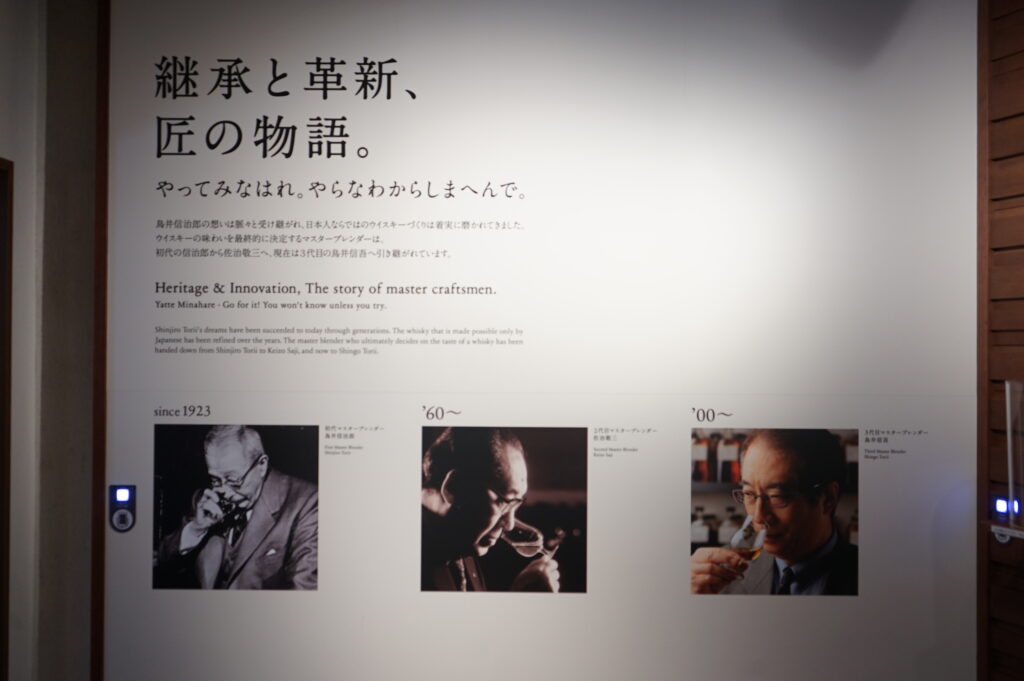
Since 2003, Suntory whisky has won numerous awards at international spirit competitions. The world then began to appreciate Japanese whisky, and it quickly became popular and increased in value. I felt that Suntory’s contribution to the establishment of the status of Japanese whisky was very significant.
The renovation work will be completed this fall, and tours of the Yamazaki distillery will be reopened. It will be interesting to see how the renovated Yamazaki distillery tour will be renewed. I would love to visit there.

